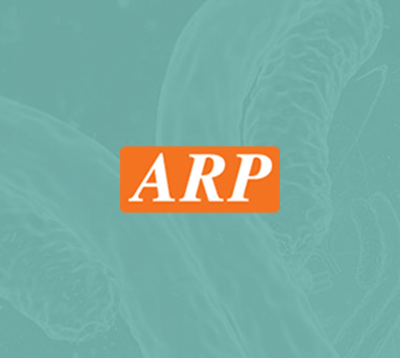Prolactin, Canine, ELISA
| Product Name | Prolactin, Canine, ELISA |
|---|---|
| Description | Canine prolactin (cPRL) is a single-chain polypeptide hormone of the canine anterior pituitary with a molecular mass of approx. 22,000. Prolactin from different species exhibits significant variations in the amino acid sequence. Canine prolactin differs from human prolactin at about 60 percent of all residues. The secretion of cPRL from the pituitary is inhibited by hypothalamic prolactin-inhibitory factor (PIF). Although dopamine was long thought to be this PIF molecule, today it seems that there is a special peptide with prolactin-inhibiting activities. The release of prolactin is certainly stimulated by different peptides, particularly thyrotropin releasing hormone (TRH) and vasocative intestinal peptide (VIP). Estrogens and progesterone also seem to play a role in the secretion of prolactin, and neurogenic factors influence its release. Milking and suckling are immediately followed by an increase in serum cPRL. The most important role of prolactin is stimulation of mammary gland growth and lactation. During pregnancy, prolactin levels in canine blood increase slightly; during lactation, significantly. Prolactin has a wide variety of other physiological actions. It affects water and electrolyte balance, metabolism and gonadal function; is an important stress hormone; and seems to play a role in the maintenance of the long interestrous interval. In dogs with pituitary-dependent hyperadrenocorticism, prolactin levels in blood were higher than in healthy animals. Prolactin determinations can be used in the therapeutic control of hyperprolactinemia. During a pseudo pregnancy, prolactin is increased. Therapy with alkaloids like bromocriptine lowers PRL levels, and lactation and maternal behaviour are decreased.The secretory capacity of the pituitary can be tested with the TRH stimulation test. The ARP Prolactin canine ELISA is an enzyme immunoassay for the measurement of prolactin in canine serum. For research use only, not for use in diagnostic procedures. |
| Sensitivity | 0.4 ng/mL |
| Reactivity | Canine |
| Sample Types | Canine serum |
| Storage | 2-8C |
| Background |
Canine prolactin (cPRL) is a single-chain polypeptide hormone of the canine anterior pituitary with a molecular mass of approx. 22,000. Prolactin from different species exhibits significant variations in the amino acid sequence. Canine prolactin differs from human prolactin at about 60 percent of all residues. The secretion of cPRL from the pituitary is inhibited by hypothalamic prolactin-inhibitory factor (PIF). Although dopamine was long thought to be this PIF molecule, today it seems that there is a special peptide with prolactin-inhibiting activities. The release of prolactin is certainly stimulated by different peptides, particularly thyrotropin releasing hormone (TRH) and vasocative intestinal peptide (VIP). Estrogens and progesterone also seem to play a role in the secretion of prolactin, and neurogenic factors influence its release. Milking and suckling are immediately followed by an increase in serum cPRL. The most important role of prolactin is stimulation of mammary gland growth and lactation. During pregnancy, prolactin levels in canine blood increase slightly; during lactation, significantly. Prolactin has a wide variety of other physiological actions. It affects water and electrolyte balance, metabolism and gonadal function; is an important stress hormone; and seems to play a role in the maintenance of the long interestrous interval. In dogs with pituitary-dependent hyperadrenocorticism, prolactin levels in blood were higher than in healthy animals. Prolactin determinations can be used in the therapeutic control of hyperprolactinemia. During a pseudo pregnancy, prolactin is increased. Therapy with alkaloids like bromocriptine lowers PRL levels, and lactation and maternal behaviour are decreased.The secretory capacity of the pituitary can be tested with the TRH stimulation test. |
All Research Products are sold for laboratory RESEARCH USE ONLY and ARE NOT TO BE USED FOR HUMAN OR ANIMAL THERAPEUTIC OR DIAGNOSTIC APPLICATIONS. The information presented is believed to be accurate; however, said information and products are offered without warranty or guarantee since the ultimate conditions of use and the variability of the materials treated are beyond our control. Nothing disclosed herein is to be construed as a recommendation to use our products in violation of any patents. ARP American Research Products, Inc. does not submit its products for regulatory review by any government body or other organization, and we do not validate them for clinical, therapeutic or diagnostic use, or for safety and effectiveness. You are solely responsible for making sure that the way you use the products complies with applicable laws, regulations and governmental policies and for obtaining all necessary approvals, intellectual property rights, licenses and permissions that you may need related to your use. Under no circumstances shall ARP American Research Products, Inc. be liable for damages, whether consequential, compensatory, incidental or special, strict liability or negligence, breach of warranty or any other theory arising out of the use of the products available from ARP American Research Products, Inc. Nothing contained herein warrants that the use of the products will not infringe on the claims of any patents covering the product itself or the use thereof in combination with other products or in the operation of any process. ARP American Research Products, Inc. disclaims any and all representations or warranties of any kind whatsoever, express or implied, including without limitation any implied warranties of merchantability or fitness for a particular purpose, of non-infringement, or regarding results obtained through the use of any product, whether arising from a statute or otherwise in law or from a course of performance, dealing or usage of trade.



